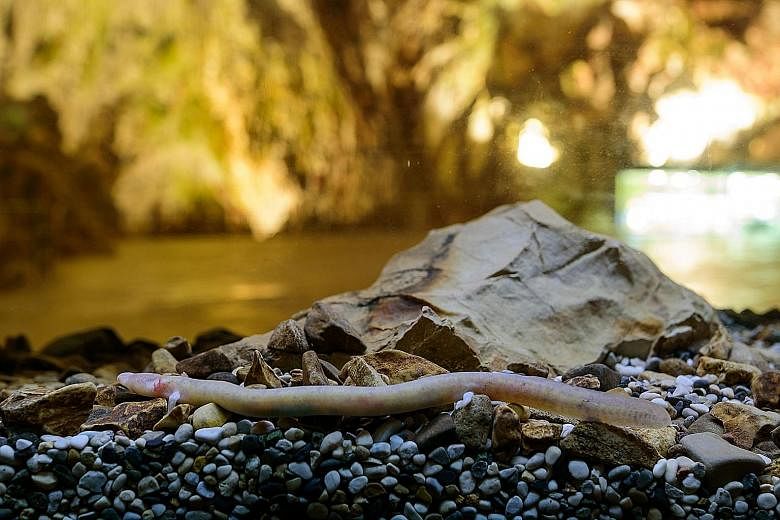POSTOJNA (Slovenia) • The strange, slithery creatures inside Slovenia's Postojna cave were once considered living proof that dragons existed, prompting locals to give it a wide berth.
Now large crowds from all over the world queue up to witness the extremely rare hatching of the mysterious olms - ancient underwater predators which can live up to 100 years and breed once in a decade.
On Tuesday, the first translucent larva broke through the delicate egg envelope after four months of nervously monitored gestation. The birth is nothing short of "a miracle", a spokesman for the tourist attraction said.
Found primarily in Balkan cave rivers, the protected eel-like species has been living in the world-famous Postojna cave, 50km south- west of the capital Ljubljana, for millions of years. This month, the cave became one of the first human-controlled environments to breed the cave salamanders.
The mother and her precious spawn were kept in darkness in a covered tank watched by a night-vision camera. On a nearby TV screen, visitors could see the tiny translucent eggs spread over a rock. From time to time, one of the embryos stirs ever so slightly.
The biologists hope the new arrivals will help to shed fresh light on the enigmatic creature, which has become a national symbol and even featured on Slovenia's currency before the euro was introduced.
While locals now fondly talk of their "baby dragons", people for centuries were too afraid to even go near the cave. During winter, heavy rain would wash out the wriggly larvae from the grotto. Slovenians believed them to be the offspring of fire-breathing "dragons living inside the dangerous cave", explained biologist Saso Weldt.
Reaching a maximum length of 35cm, the blind animal with its four tiny limbs is a far cry from being a scary monster. Sometimes also referred to as "human fish", the slim vertebrate sports three feathery gills on each side of its elongated snout. The body's translucent pink skin makes it easy to spot the internal organs and determine the sex.
In place of sight, it has developed acute sensory receptors for smell and movement, helping it to hunt for prey such as crabs and snails in the dark, or snap at intruders.
Even more impressively, it can go without food for up to a decade.
AGENCE FRANCE-PRESSE

